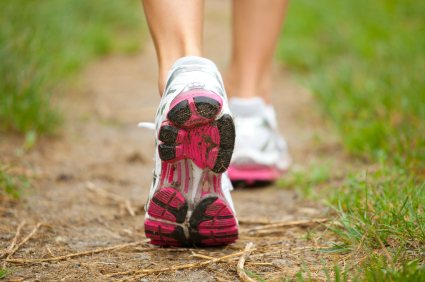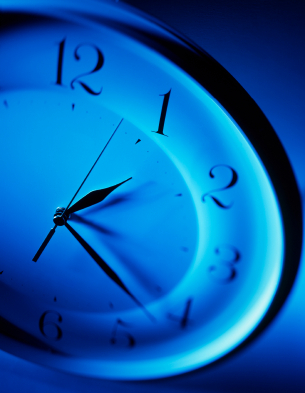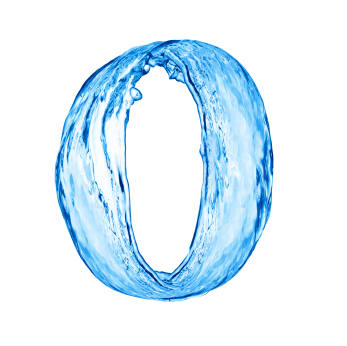Exercise and sleep. Sleep and exercise. Does it? Or doesn’t it?
Among the many repeated themes on Flashfree, exercise and sleep rank highly. After all, exercise and physical activity are musts for women as they age. And sleep? Well, that goes without saying. However, although study findings have been fairly consistent with regard to connecting regular or vigorous physical activity to a reduction in some menopausal symptoms, the verdict is still out on sleep.
Sleep. Let me tell you; I sure could use some help in that department!
So what’s the latest and greatest? Does it? Or doesn’t it? Well, a study reported last month in the early online edition of Maturitas journal suggests that it might. The researchers write that studies that have evaluated the effects of aerobic activity on sleep are few and far between, and the results, contradictory. Still, they examined what would happen if they took a group of 176 sedentary women between the ages of 43 and 63 and subjected them to aerobic exercise training for six months. The exercise that half the women were asked to do consisted of 50 minutes of walking (or nordic walking with sticks) for two sessions and other aerobic activity for two sessions per week. The degree of the exercise was moderate, corresponding to about 64% to 80% of their target heart rates. The other half of the group remained sedentary. But both were asked to report via mobile phones how much hot flashes disrupted their sleep, and how much they slept every day on a scale of 1 to 5 (5=good, 1=poor).
The findings were pretty favourable. Women who exercised for 6 months experienced a 2% improvement in sleep quality compared to the women who didn’t (whose sleep quality, incidentally, declined by a half percent). Moreover, the exercise group, who had reported having hot flashes disturbing their sleep changed their tune by six to 10 weeks after starting their four times weekly routines and reported significantly fewer episodes than their sedentary peers.
Some may question that methods used to collect information; for example, studies that rely on recall are often called into question for accuracy and mobile phone data collection is uncommon. Still, the study was longer that most and the researchers validated their findings by scientific methods. That aside, since many readers come here to read the bottom line, is that regular exercise may improve sleep. It definitely affects quality of life and has a positive emotional benefit. Whether or not a 2% improvement is enough is really subjective. For me? I am happy to sleep through the night these days!
Read MoreMove it to lose it
 I mean it! New research suggests that if you want to hit that fatigue, depression, flashes and mood swings in one fell swoop, you may not have to resort to HRT. And the solution may be relatively simple: move.
I mean it! New research suggests that if you want to hit that fatigue, depression, flashes and mood swings in one fell swoop, you may not have to resort to HRT. And the solution may be relatively simple: move.
I can’t stress the importance of physical activity as we age enough. From bone health to heart health to mental health, it is the one accessible, equal opportunity strategy, regardless of income or geography. Because even if you don’t have entry to the gym, you can walk, run, bike, step, or engage in other activities that don’t require a membership or a monthly fee.
In face, researchers are reporting that simply engaging in vigorous physical activity, i.e. 7 days of a combination of moderate intensity/intense activities that add up to 3000 MET minutes a week) can significantly decrease menopausal symptoms, in particular fatigue, depression, insomnia and hot flashes. (Activity level is scientifically measured by units known as METs, or metabolic equivalents; vigorous activity is equivalent to 8 METs and moderate activity to 4 METs).
In a study of over 300 women between the ages of 45 and 60, the most active had about 75% lower menopausal symptom scores. Yet, exercising only moderately(e.g. 3 or more days a week of vigorous activity for at least 20 minutes daily or 5 or more days of moderately intense activity for at least 30 minutes a day) can also reduce strong menopausal symptoms, just not to the extent that more intense activity does.
The reasons behind the benefits of physical activity are pretty simple: your endorphins play a role in vasomotor symptoms and low levels are associated with increased release of luteinizing hormone (a hormone produced by the pituitary gland that is involved in ovulation), leading to hot flashes, heart racing, sleepless ness, anxiety and muscle discomfort. By raising your endorphin levels, even in light of declining estrogen, you stand a better chance at placing a roadblock in front of this process. However, this is only part of the story; body composition, mood and how well your themoregulatory system is functioning are also important.
Still, the message is clear: Move it to lose it, “it” being those trouble menopausal symptoms.
Read MoreWhen it comes to exercise, watercress might be the ticket
Watercress and exercise? Who would have thunk that this peppery wonder veg may help to protect against cellular damage that results from high level exercise? Mind you, this initial information comes from a miniscule study of 10 men but it may carry some important information to file for the future.
Watercress is one of the oldest green vegetables known to man and evidently can be traced back to ancient Greece and Persia. But regardless of its history, this salad green is a good source of vitamins C, A, E and K, and is rich in antioxidants, so much so that when ingested, it may help to reduce oxygen free radicals that can cause damage to cells, including those that are generated during extreme, exhaustive exercise (i.e. to the point near fatigue).
In this study, which appears in the British Journal of Nutrition, 10 healthy men in their early 20s ate roughly 3 ounces of fresh watercress in a single sitting for eight weeks. They then got on a treadmill and were tested to exhaustion. Thereafter, they stopped eating watercress for another 8 weeks and repeated the test. Both times, researchers drew blood. In the second half of the study, half the men stopped eating watercress, and half ate the same amount as before with water, rested for two hours and then completed the same exercise test while the other half didn’t eat watercress but did drink water and repeated the test.
The results?
Exercising to exhaustion did induce damage to the men’s DNA. However, eating watercress appeared to reduce the degree and extent of the damage, both in the short and long-term and men who did not eat the watercress in the second half of the study had more DNA damage than those who did. What’s more, watercress did not have an accumulative effect; in fact, eating it just two hours prior to exercise appeared to boost its protective properties.
In a related press release, lead researcher Dr. Mark Fogarty explains that “the increased demand on the body for energy can create a build-up of free radicals which can damage our DNA. What we’ve found is that consuming a relatively small amount of watercress each day can help raise the levels of important antioxidant vitamins which may help protect our bodies, and allow us to enjoy the rewards of keeping fit.”
In fact, watercress is one of the most antioxidant-rich green leafy vegetables available. Its protective effect may be the result of high concentrations of sulfur-containing nutrients known as glucosinolates (which are also found in broccoli, cabbage, brussel sprouts, cauliflower and cabbage) and carotenoids (plant pigments that the body converts to vitamin A that also protect against free radical damage). Watercress is also known to boost the beneficial action of other antioxidants, including beta-carotene, alpha-tocopherol and ascorbic acid.
Clearly, watercress needs to be studied in greater numbers of men and women and in different age groups. In the meantime? Eating watercress can’t hurt and may even help with much needed post-exercise repair.
Read MoreNo time like a present: heart disease, metabolic syndrome and weight
Want to give yourself the gift of a lifetime? Aim for a healthy weight before you hit menopause.
We’ve discussed it time and again on Flashfree; weight gain and menopause go hand in hand like a horse and carriage. And with that weight gains comes an increased risk for developing heart disease, diabetes and the dreaded metabolic syndrome. However, researchers from the University of Ottawa are reporting that entering full menopause with a healthy body mass index (BMI) actually confers protection.
In the study (which appeared online a few weeks ago in the journal Menopause), researchers evaluated and observed 102 premenopausal women for body composition and changes in their cardiovascular health profiles. The women, all of whom were between 47 and 55 years of age, did not smoke, had a BMI between 20 and 29 and had had a stable weight for at least 6 months before the study started, were followed for five years. Each year, the researchers gauged if they had entered menopause, measured body composition (i.e. total fat mass, trunk fat mass and total fat free mass), waist size, the degree of abdominal fat and took blood to examine glucose, insulin and blood fat levels.
The study’s lead researcher, Dr. Denis Prud-homme explains that by simply observing the women and not imposing any structured interventions (e.g. diet or exercise) they were able to assess changes within a more naturalistic environment. At the study’s end, they discovered that despite significant increases in fat mass, visceral abdominal fat, blood glucose and cholesterol levels, most of which were the natural result of hormone fluctuations and aging, the women did not appear to have any declines in their heart or metabolic profiles that would indicate an increased risk for disease. Dr. Prud-homme says that a possible explanation might be that “even if the area of visceral fat is increased, it is still under the critical threshold associated with cardio-metabolic deterioration.” In other words, by maintaing a healthy lifestyle and BMI premenopausally, these women were able to change their risk equations once they fully entered menopause.
The bottom line is that the present you give yourself now will last long into your later years. Exercise. Eat right. And pay attention to your health.
No time like the present. For a present. Give yourself one.
Read MoreWednesday Bubble: Coregasm?
I ran across an article earlier in the week referencing a new study demonstrating a link between exercise and orgasm. And thought: “hold on.” Yet, a deeper dive into the topic demonstrates that it might very well be true, at least for some women. And while I admit that I am not a fan of the term “coregasm,” I could very easily become a fan of sexual arousal or pleasure during exercise; the premise intrigues me as I start to wonder if there is a way to combat aging issues of sexual desire/dysfunction through certain workouts.
Anyone for an “Exercise-O?” But I digress…
Researchers from the famous Kinsey Sex Institute at the University of Indiana in Bloomington write that “orgasms that occur outside of explicitly “sexual” contexts have received much less attention in sexuality research,” and are considered “anomalies, even pathological.” One such non-sexual behavior is apparently physical exercise, noting that “in recent years, popular magazines and Internet blogs have described exercise-induced orgasms, frequently identifying them as ‘coregasms’ due to the association between the type of exercise, i.e. those that work on the core, and orgasm.” However, they also say, gratefully, that this terminology might be incorrect due to a lack of evidence linking orgasm to core muscle activity.
So, why is this important anyhow (besides the obvious)?
Orgasm is incompletely understood and for women in particular, it’s often linked to a variety of factors, including sexual arousal, environment, life stressors, partner intimacy and caring and of course, lubrication. And, in my research I’ve discovered that for some women who experience exercise-related orgasm, they may start very early before they participate in sexual activity with a partner, necessitating counseling and assistance in transferring the ability from sports to a human, if you will. Moreover, as the researchers say, given the attempts to enhance sexual arousal, perhaps this research can start to shed some light.
Consequently, they surveyed 530 women between the ages of 18 and 56 who reported experiencing exercise-induced orgasm or exercise-induced sexual pleasure (i.e. coming close to orgasm during exercise) via email messages. The results, which were published last November in Sexual and Relationship Therapy are intriguing:
- 40% or more of women reported having had experienced exercise induced orgasm or sexual pleasure during exercise 11 or more times in their lifetime
- Almost 44% said that the first time it happened, it was during abdominal exercises, and over 50% reported having an orgasm during situps or crunches within the past three months. Other types of exercise that appeared to spur on recent orgasm included weight lifting (26.5%), yoga (20%), biking or spinning (15.9%), swimming or water aerobics (17.9%), running (13.2%) and walking or hiking (9.6%)
- Many of these same exercises were reported by women who experienced sexual pleasure, including biking/spinning, sit ups/crunches, lifting weights and yoga.
So, how do women feel about these experiences? Apparently, most say that while they are happy about these experiences, those who actually experience orgasm while exercising also express feeling embarassed or self conscious, fearing discovery by others if they vocalize their pleasure. Two women* I spoke to told me that if they are alone, they rarely do anything to stop it although they do control any overt visible displays. In public, they let it go on for as long as they can without losing ‘control’ and then deliberately redirect attention to the exercise. In fact, in the study, at least a third of women in the survey in either group reported that they could control their experience.
Women who orgasm during physical activity also say that it occurs without sexual fantasies, which suggests that perhaps there is a component of orgasm that is totally unrelated to sex. Yet, there are some women who associated sexual thoughts first, noting that they are very aware how many reps or time spent exercising will bring on an orgasm.This begs the chicken/egg question: does pleasure while exercise beget adjustment of thinking beget orgasm? Moreover, some women reported being motivated to exercise to reach orgasm or experience sexual pleasure, which takes away the spontaneous aspect of any hypothesis.
Regardless, the two women I spoke with in my side research shared some advice for those of who are fortunate enough to have experienced this. If you’re new to the exercise-O, game, Natalie offers this: “it takes a bit of self-control so in the beginning, you have to figure out what’s happening (“is this what I think it is?!”), acknowledge it and then purposefully redirect your attention to your surroundings.” For the more experienced, Ashley said that women should enjoy it. “You are lucky. Once you recognize what’s happening, enjoy it until you reach that point where you NEED to vocalize or publicly display your experience.” At that point, she adds, “I highly advise a quick “oh, I’ll save it for later…” and similar to Natalie’s advice, she says to redirect your thoughts.
Ironically, both women caution that if you are exercise-O prone, to stay away from moving objects, such as biking on the street or skiing, noting that the obvious: the moment it might take to calm your parts can mean an serious accident!
The researchers caution that more study is needed, especially since women were recruited online and that there was no quality measurement tool with which to gauge questions and answers. They also say that future research might want to focus on men’s experiences with exercise induced orgasm and sexual pleasure. Moreover, the triggers of either are still unknown. Still, the fact that I was able to quickly find two women who have experienced this phenomenon tells me that there are likely a lot more out there.
I’m intrigued. This could open up an entire new world. And I would love to see more of these types of studies done in women 50 and older. Until then? I prefer the term exercise-O over coregasm. But that’s just me. And this bubble ain’t burst. How refreshing!
*Names changed to protect identities.
Read More
Flash dance? Yeah, maybe!
Did you ever watch Flashdance, the 1983 film that tanked in reviews but went on to be one of the highest grossing films that year? Guess it says a lot about our culture. Still, I am not going to say that I didn’t find it entertaining, or that Michael Nouri wasn’t hot in his day. But I digress…
For some reason, the film’s title came to mind when I stumbled across study that examined whether or not aerobic activity could ameliorate hot flashes and night sweats, perhaps because a lot of us dance around the issue rather than address it until it gets intolerable. Or perhaps because it makes a catchy header. Or maybe because Jennifer Beals works up such a sweat during her stand-in’s routine.
Regardless, on the heels of last week’s three-parter on ‘Forties fitness’ and motivating women, I thought I’d share some interesting information regarding physical activity, namely aerobic exercise.
Exercise. I’ve been pushing it for years because for me, it’s my drug of choice. What else offers benefits that include endorphins, wellbeing, bone health, metabolic booster and weight maintenance? And who would have thought that just 5o minutes, four times weekly could have a significant effect on the main cause of menopause flooding, including irritability, clothing changes, sheet replacement and crummy sleep?
That’s what researchers are reporting in Menopause. They discovered that when they assigned menopausal women to 6 months of aerobic training, the women experienced dramatic changes in mood swing, night sweats and irritability. Briefly, the women were divided into two groups:
- 50 minutes unsupervised aerobic training that with walking or Nordic walking (walking with ski poles) at least twice a week added to walking, Nordic walking, jogging, cycling, swimming, skiing, instructed aerobics or step class twice a week, plus two health lectures or,
- Health lectures twice weekly
They researchers were able to track target heart rates (64% to 80% of maximal) because the women in the aerobic training group were monitored and then given feedback All the women also reported the frequency/severity of menopausal symptoms (frequency of night sweats, mood swings, irritability, depressive mood, headache, vaginal dryness and urinary symptoms).
Although declines in symptoms (except vaginal dryness) were seen in both groups (which accounts for what they call a placebo effect, common to all studies), reductions in the prevalence of night sweats, mood swings and irritability were significant only in women engaging in regular aerobic activity. What’s more, because the women recorded their symptoms via a mobile phone, the likelihood that recall issues might come into play were reduced.
So, what about other studies that haven’t shown any benefit from exercise? The researchers point out that in their study, all the women had fairly substantial rates of symptoms (e.g. up to 60% had night sweats, 25% depression/irritability and 30% headache) while in other studies, the numbers at the start of the trials haven’t been quite as robust.
The upshot is that f you don’t care to jump on the hormone train, it can’t hurt to give aerobic activity a whirl. Just be sure to speak to a certified trainer and your health practitioner before diving in.
Read More










